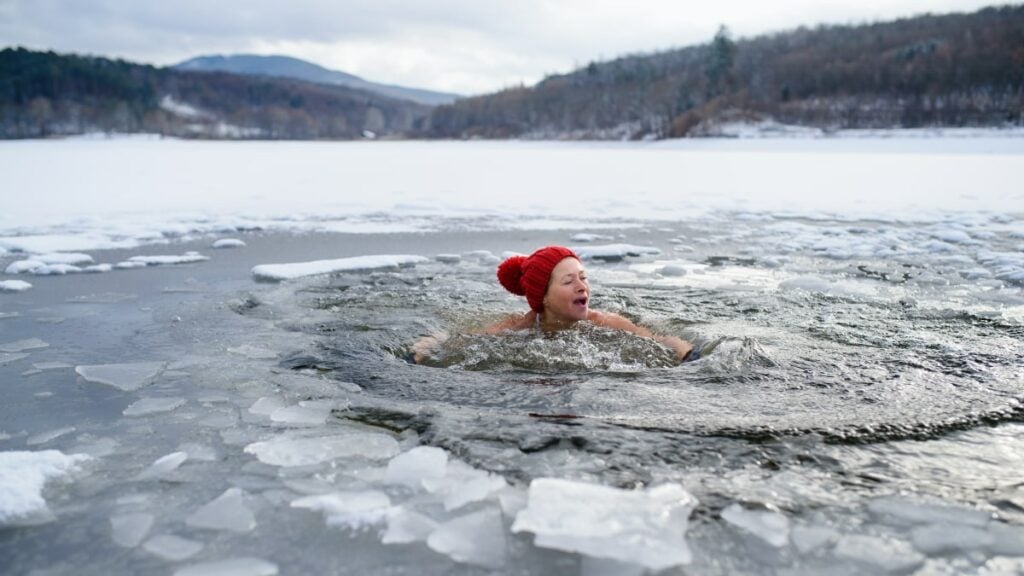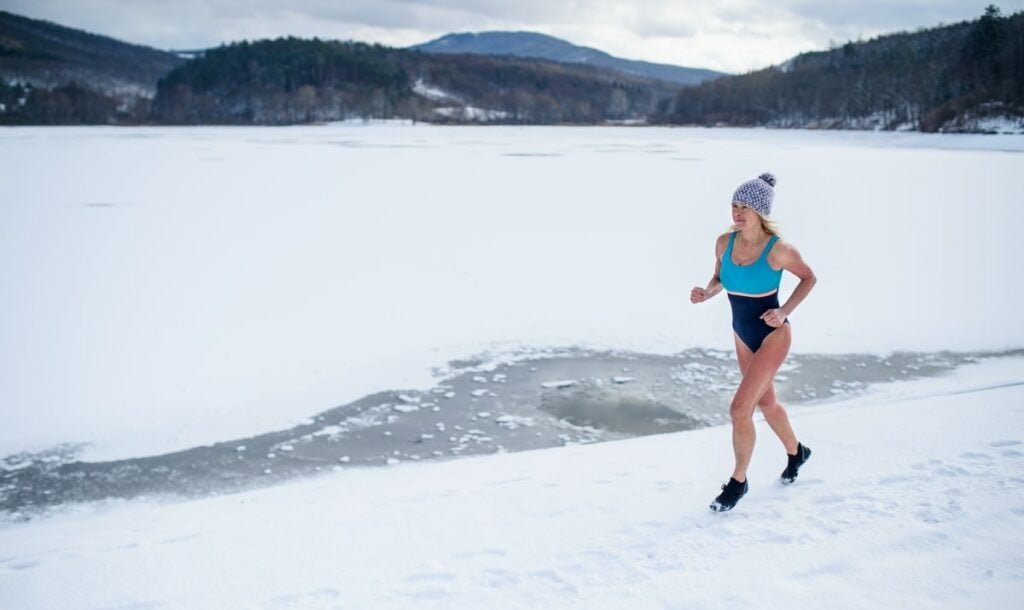Why do The Nodics love ice baths?
We have been taking ice baths in the Nordics for a very long time, as it’s something that comes quite naturally when all the water around you is ice cold in the winter. And since the 1800s, very popular ice-bathing facilities can be found across the Nordic coastal regions, still widely used and growing in popularity still to this day.
So why not just heat up some bathwater instead of putting yourself through the ice-cold shock of a dip in the winter sea? Well, it turns out ice baths come with quite a few benefits for anyone brave enough to take the freezing plunge.
I’ve been taking ice-cold baths and jumped in the snow in connection with our Swedish-Finnish sauna routine since I was a kid, but it was during my Swedish Army winter training I started to learn about the real benefits this tradition has. We learned about ice-bathing from a scientific and physiological perspective, how it actually affects our bodies, and of course had the pleasure of being dunked in a frozen lake with full equipment (including skis) — because why not?
In the end, ice bathing is free for everyone, fairly uncomplicated, and it can give you a real energy boost when you need it the most. Afterward, you’ll feel unbeatable, energetic, light, and 100% alive. And you don’t have to pay a penny!
The list of health benefits of ice-bathing also seems to be getting longer every year, so I wanted to catch up on the latest science, verify the claimed benefits, and shed light on this ancient Nordic tradition. You’ll hopefully come out on the other end of this article knowing why we throw ourselves in ice-cold water, and why you probably should too!

Are Ice Baths Good For You?
Ice-baths can lead to a number of positive effects according to a Finnish study that followed 1000 ice-bathers for 4 months. In the study, they observed that Ice-bathing can:
- Strengthen your immune system by creating more white blood cells
- Produce a positive stress reaction and raises levels of serotonin and dopamine in your brain
- Function as a “vaccine” against stress, making you more resilient against negative stress
- Lower your blood pressure if you are going through a stressful phase of your life
- Enhance your blood circulation which leads to healthier arteries
- Produce more insulating brown (good) fat that replaces white (bad) fat
- Act as a pain killer when adrenalin and noradrenalin is released
- Produce an energy boost that makes you more alert in general
Here is how the ice-bathing Finns felt after having completed the study:American professors Diwadkar and Muzik at Wayne State University reaches similar conclusions in their 2019 study, where they find evidence supporting that exposing your body to controlled stress can train your system to handle stress better, and experience a sort of high afterward (similar to a “runner’s high”).
They also emphasize how focusing on breathing calmly during an ice bath can yield similar results as meditation and yoga, helping you reach a sort of “flow” state.
Sports scientists are however still split whether or not ice-bathing should be used in connection with high-level physical activity (like for example footballer Christiano Ronaldo and basketball player LeBron James famously do after each game).
Still, there is no doubt that there are plenty of positive effects for us regular folks who happen to be pretty far from world-class athletes.
Can Ice Baths Be Bad For You?
When you submerge yourself in cold water you produce a stress reaction that immediately raises your blood pressure as the blood vessels shrink temporarily to adjust for the lower temperature. So if you have any form of heart condition ice bathing might not be advisable.
People with diabetes should probably also avoid the cold dips, as it can affect blood flow to extremities negatively in those cases.
In the end you should consult with a health professional if you have any doubts or questions, and I’ll also leave you with this advice from Dr. Farcy, one of the American Academy of Emergency Medicine’s board of directors:
If you’re healthy and sober, jumping in the cold water for just a minute or so is unlikely to have any ill effects, since the immersion won’t be long enough to affect your core body temperature
Dr. David Farcy, physician who serves on the American Academy of Emergency Medicine’s board of directors
Important Guidelines for Ice-Bathing (How-To Guide)
-
Prepare gradually:
- Start getting used to the cold water gradually, preferably by starting in a bit warmer (but still cold) water in the spring or fall
- Warm up in the sauna beforehand if possible
-
Stay safe:
- Don’t stay in the water for too long (5-20 seconds can be enough, 10 minutes absolute max)
- Don’t dip your head if you are a beginner
- Never ice-bath alone
- Do not ice-bath if you are suffering from heart problems or high blood pressure
-
Keep the temperature just right:
- Aim for the water temperature in an ice bath to be between 2-10 ℃ (35.6-50 ℉)
- Wear something like a wool hat on your head if you’re keeping it above water
-
Get warm gradually:
- Emerge from the water
- Dry your entire body
- Move around until you start feeling your limbs again
- Get into the sauna if you have access to one (If not, just put on a couple of light layers of clothes at this stage and stay indoors)
Bonus tip: Bath naked if possible to avoid getting even colder due to your wet swimwear.


